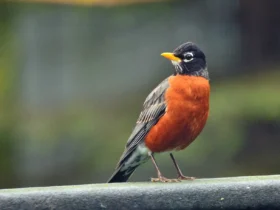High in the rugged and awe-inspiring landscapes of the Himalayan mountains, a striking and elusive bird roams—the Blood Pheasant (Ithaginis cruentus). With its vibrant plumage, unique appearance, and ability to thrive in the challenging altitudes, the Blood Pheasant has captured the fascination of birdwatchers, nature enthusiasts, and explorers alike. In this article, we delve into the captivating world of the Blood Pheasant, exploring its appearance, habitat, behaviors, and its role as a jewel of the Himalayas.
Blood Pheasant images
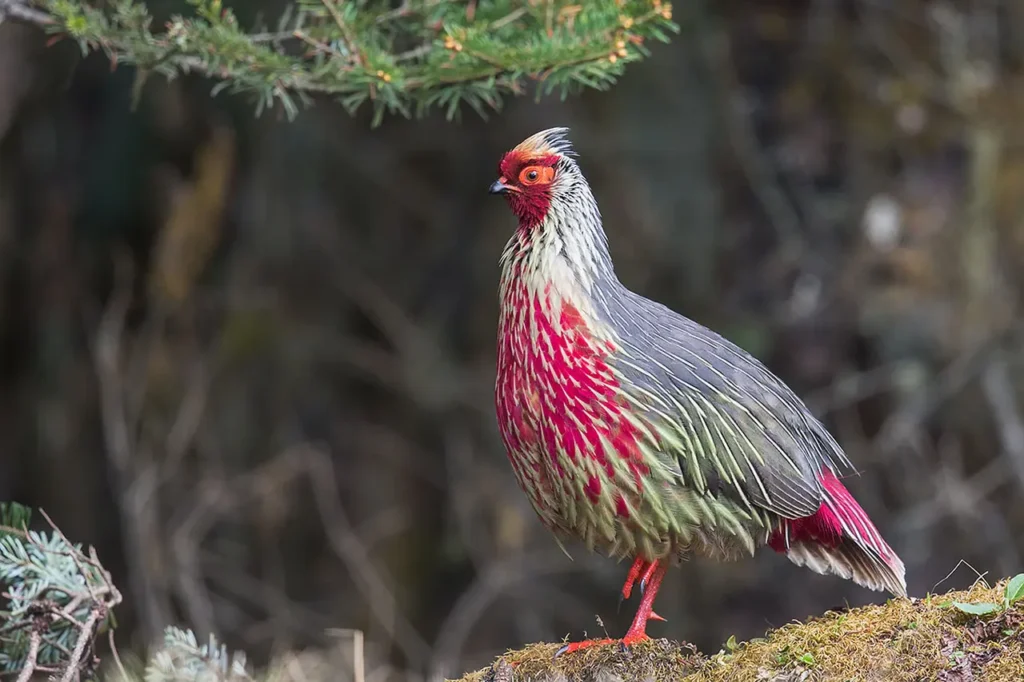
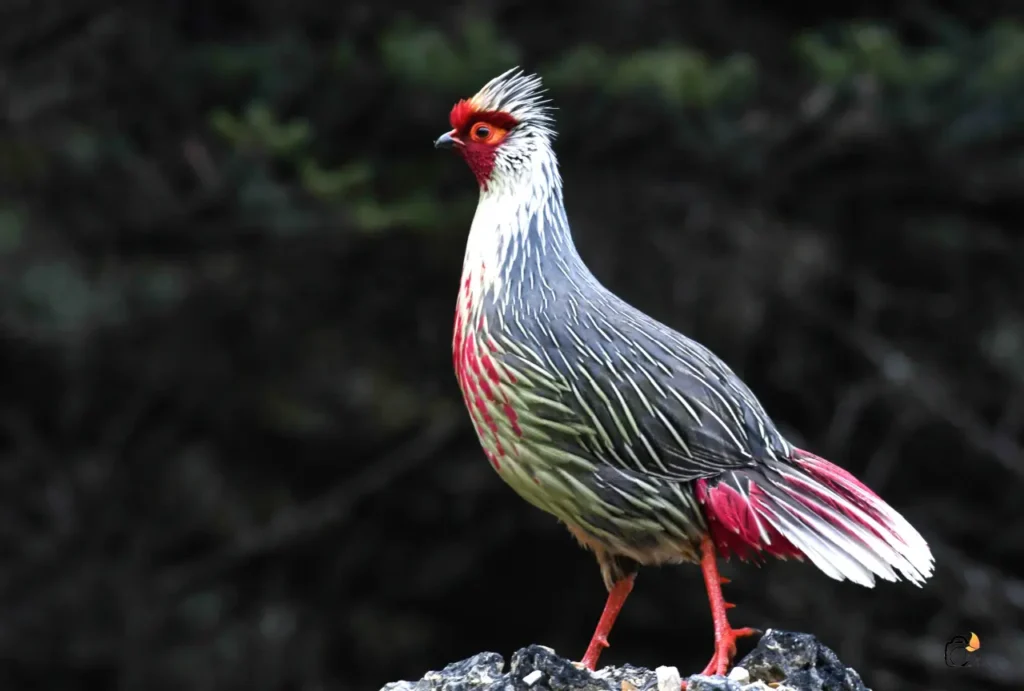
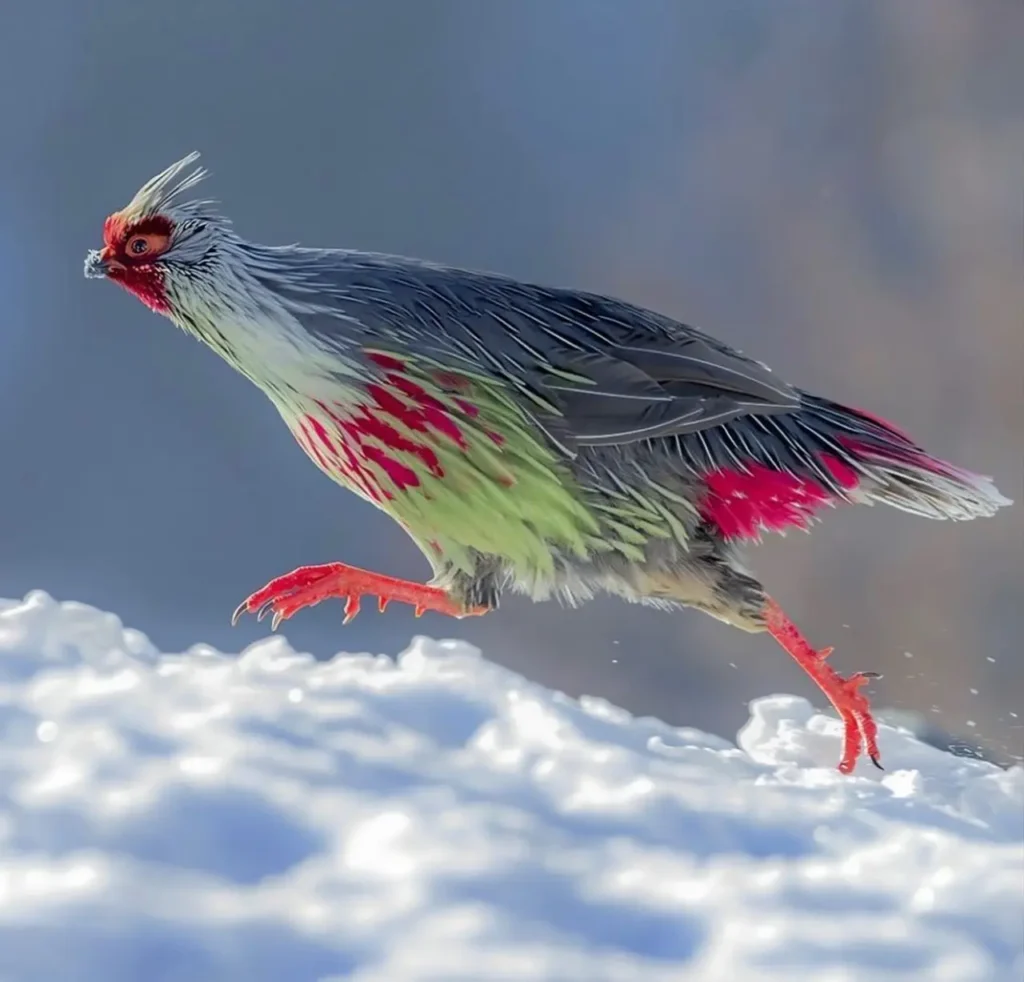
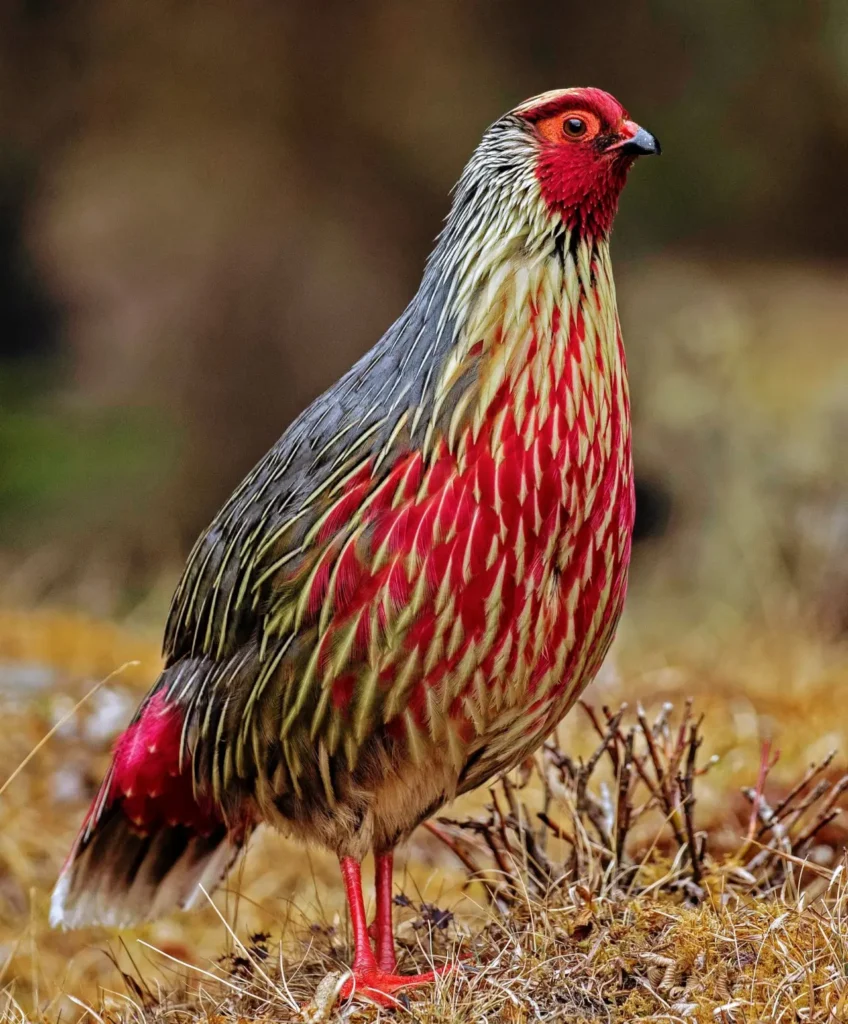
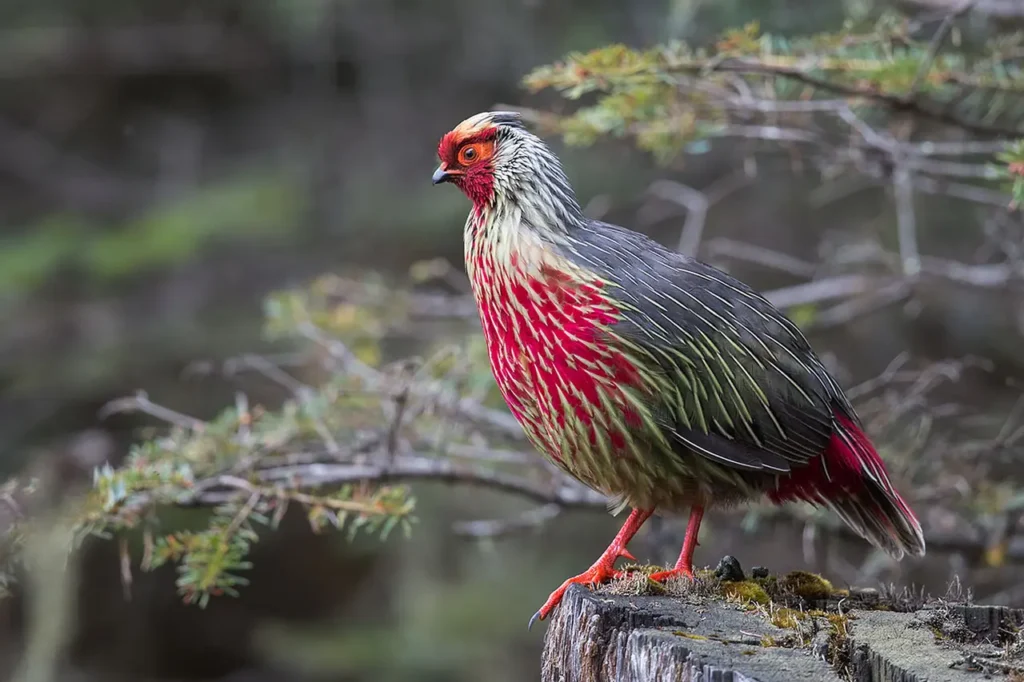
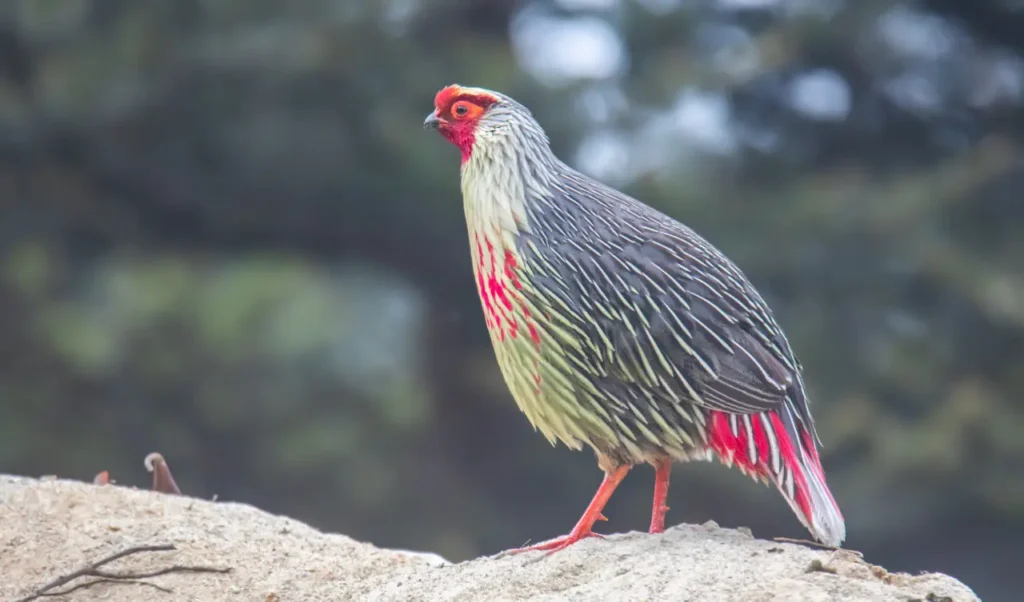
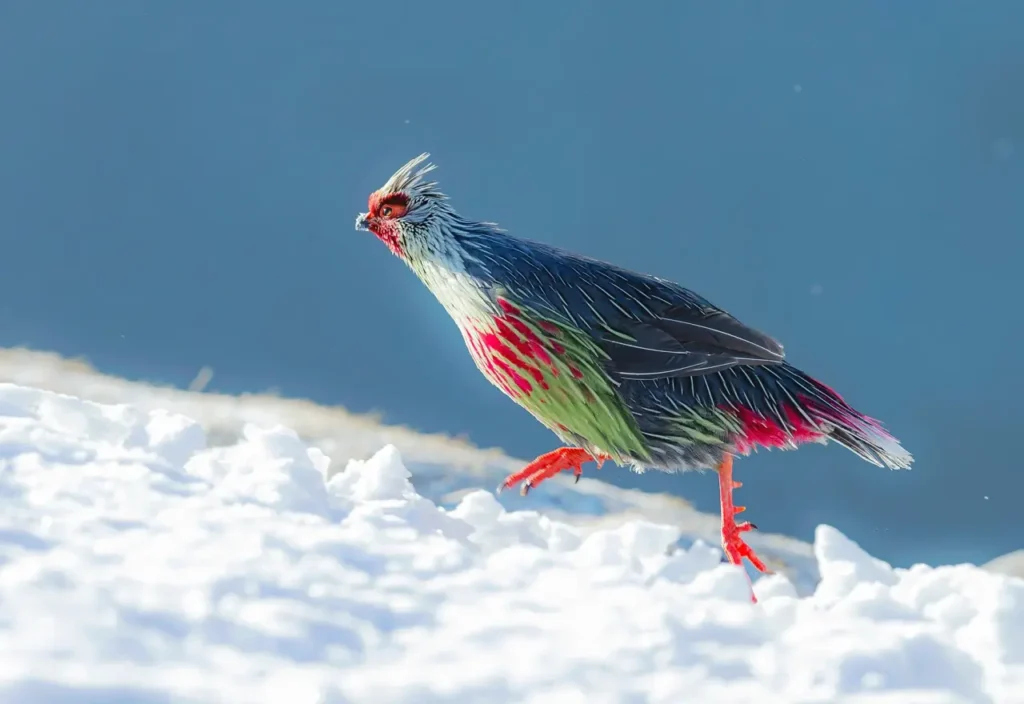
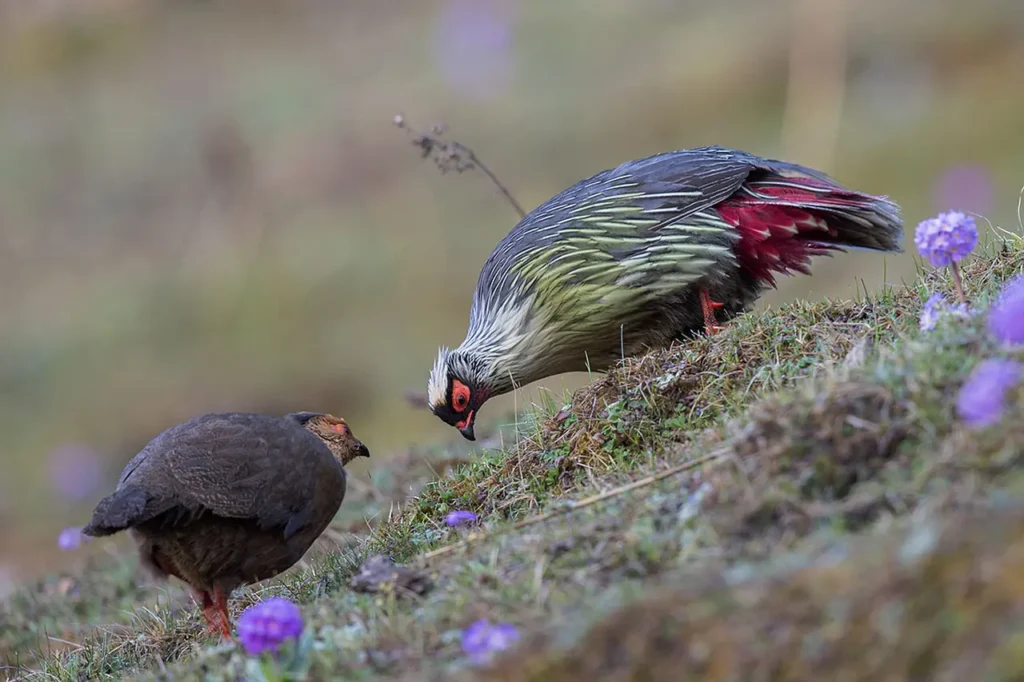
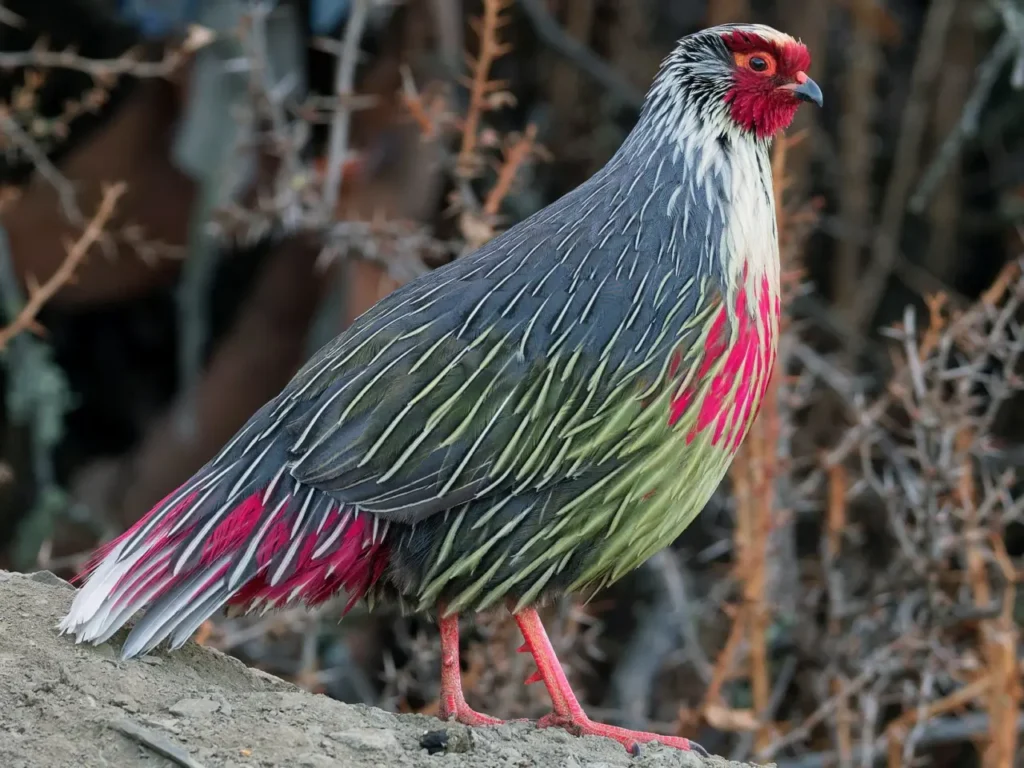
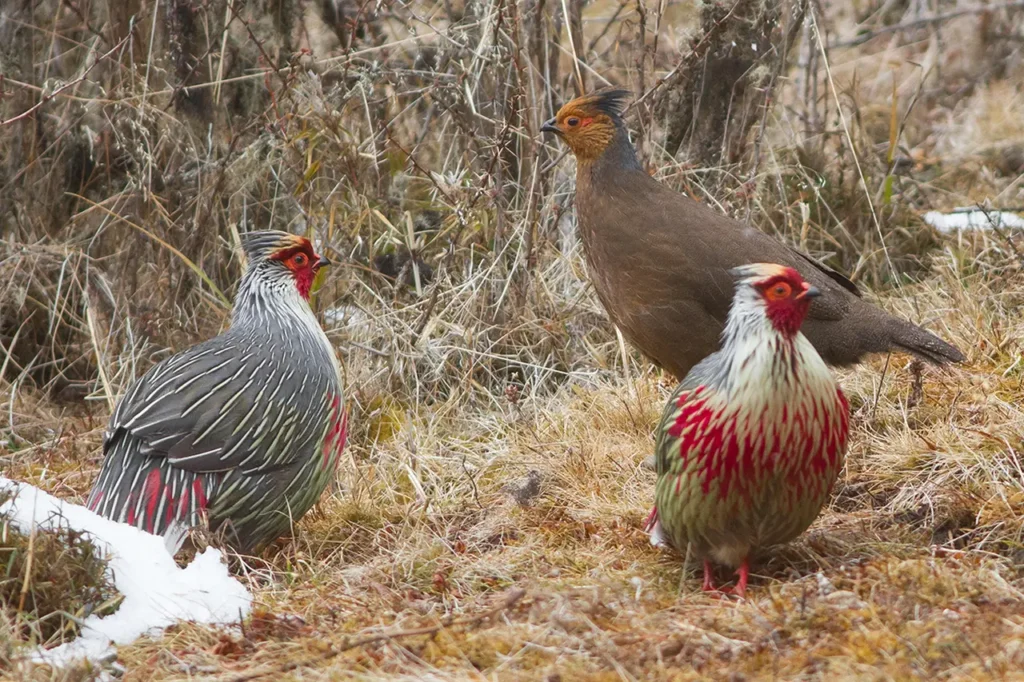
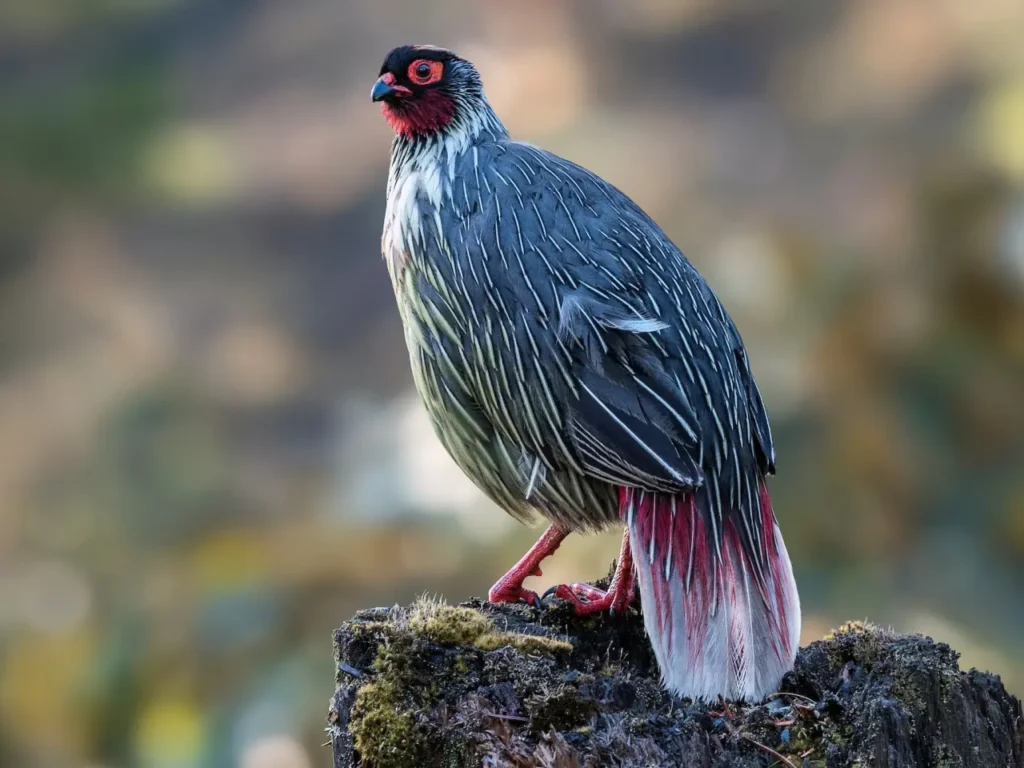
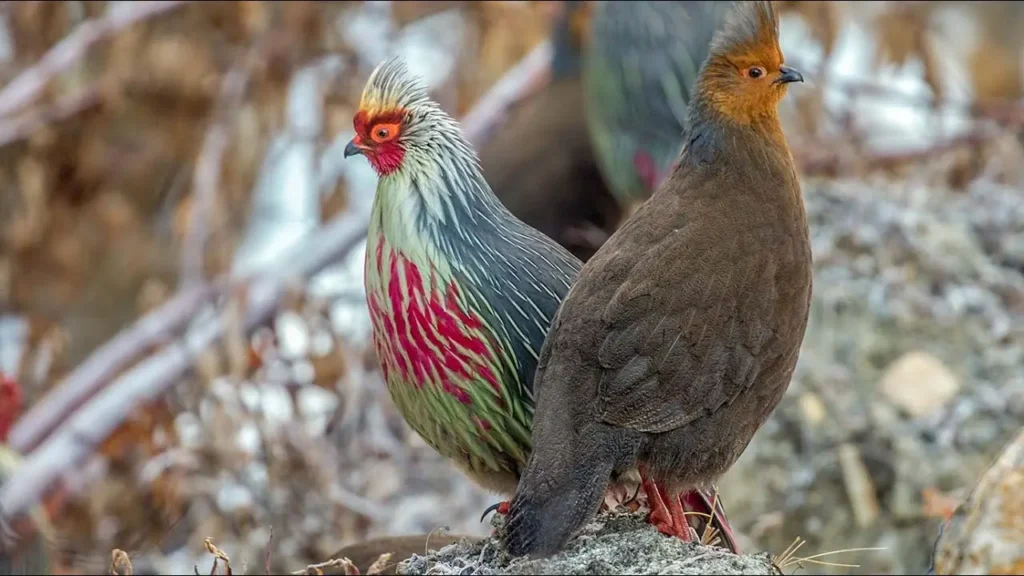
Appearance and Characteristics
The Blood Pheasant is a bird of extraordinary beauty, showcasing a unique blend of colors and patterns that make it stand out in its mountainous habitat. The male Blood Pheasant boasts a bright crimson body, while the upper back, wings, and tail are adorned with intricate black and white markings. Its distinctive appearance is further enhanced by the deep blue facial skin and striking red eye.
The female Blood Pheasant, in contrast, sports more muted colors, with a brownish plumage that camouflages well against the rocky terrain.
Habitat and Range
The Blood Pheasant is native to the Himalayan region, specifically the high-altitude forests and alpine meadows that span across Nepal, Bhutan, India, and China. These birds are known to inhabit elevations ranging from 2,400 to 4,800 meters (7,900 to 15,700 feet) above sea level. Their ability to thrive in such extreme altitudes showcases their remarkable adaptations to harsh environments.
Behaviors and Adaptations
The Blood Pheasant’s ability to survive in the challenging Himalayan environment is a testament to its unique behaviors and adaptations. These birds are often seen foraging in groups, pecking at the forest floor for seeds, berries, insects, and even small invertebrates. Their distinctive feeding habits play a role in maintaining local ecosystem balance.
To cope with the extreme cold, Blood Pheasants have evolved specialized adaptations. They have feathered legs and feet that provide additional insulation, and they often seek shelter in thick undergrowth to escape the harsh weather conditions.
Conservation and Cultural Significance
The Blood Pheasant holds cultural significance in some of the regions it calls home. In Bhutan, for example, it is considered a symbol of good fortune and is often associated with local folklore.
As with many species, the Blood Pheasant faces threats due to habitat loss and potential disturbances from human activities. Conservation efforts aimed at preserving their high-altitude habitats are essential for ensuring the survival of these magnificent birds.
The Blood Pheasant’s striking appearance, remarkable adaptations, and role in the Himalayan ecosystems make it a true jewel of the mountains. Its vibrant plumage and unique behaviors stand as a testament to the diversity of life that thrives even in the harshest of environments. By valuing and protecting the habitats of the Blood Pheasant and its fellow inhabitants of the Himalayas, we contribute to the preservation of the natural beauty and biodiversity that graces these awe-inspiring landscapes.
